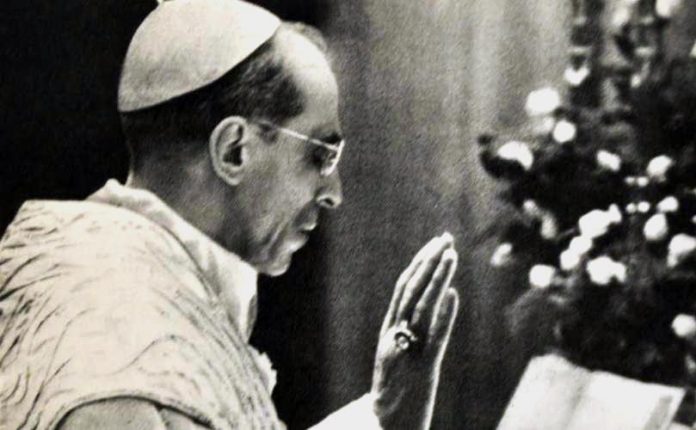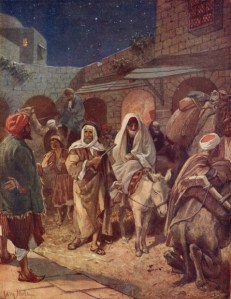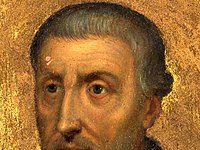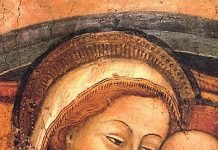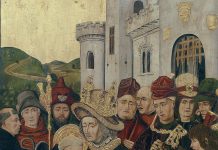Disinformation, noun: false information spread deliberately and often covertly (by planting rumours) to deceive in order to influence public opinion or obscure the truth. The English word disinformation is a borrowed translation of the Russian dezinformatsiya, derived from the title of a KGB black propaganda department. Josef Stalin coined the term, giving it a French-sounding name to claim it had a Western origin. Russian use began with a “special disinformation office” in 1923.
Next year, the Vatican will open its secret archives on the pontificate of Pope Pius XII, covering the years 1939 to his death in 1958. It is said the reason for this is to open the way for his beatification and eventual canonization.
Yet the inevitable question will be raised again. Will the archive exonerate Pope Pius XII for who he really was: Hitler’s and Stalin’s most spiritually powerful adversary? Or will he continue to be known as “Hitler’s Pope?” – the intended result of an ongoing smear of his moral character and reputation?
The facts of his life are well known. Born in Rome, March 2, 1876 to devout Catholic parents, Eugenio Pacelli entered the seminary at age 18 and was ordained April 2, 1899. He was consecrated a bishop by Pope Benedict XV, the pontiff of World War I, on May 13, 1917 – the date of Our Lady’s first apparition to the children at Fatima – confirming again there are no accidents in God’s divine plan. Subsequently encouraged to enter the Vatican’s Department of Extraordinary Affairs, Pacelli’s mission was to defend the Church “from the onslaughts of secularism and liberalism throughout Europe.” Thus began his years in Germany and Prussia where he served as Apostolic Nuncio to Bavaria 1917-1925; to Germany 1920-1930 and to Prussia 1926-1929, before returning to Rome. Ten years later, on March 2, 1939, his 63rd birthday – Pacelli became pope of another world war and the hell it unleashed.
In retrospect it was also during those war years that the Holy Spirit can be thanked and praised for the choice of exactly the right man, particularly in Europe where in August 1939 Adolf Hitler signed a cynical non-aggression pact with the Soviet Union’s murderous dictator, Josef Stalin, whose communism the Church had long been opposing.
Pius at war
Nor, after war broke out September 1, 1939, with the Nazi invasion of Poland, did it take Pius long to demonstrate his courage and cunning in combating these two vicious enemies of Catholicism and Judaism, though his behind-the-scenes activities were not publicized. For good reason. By not drawing needless Nazi and Soviet attention to Catholics and Jews, Pius showed how well he understood the folly of moral grandstanding which, in those days, meant bringing the wrath of the enemy onto the heads of the flock while failing to advance their cause.
So it wasn’t until the end of the war that many of Pius’ heroics became well known through their wide circulation in the press, including in the New York Times which reported that Rome’s population actually grew during the Nazi occupation because “in that period under the Pope’s direction, the Holy See did an exemplary job of sheltering and championing the victims of the Nazi-fascist regime.”
Sheltering meant opening 150 sanctuaries in Rome alone. Under stairs, in lofts, in cupboards, in storage rooms and even in Pius’ bedroom which he vacated for refugees. It also meant falsifying identification papers, running covert information networks and ringing convent bells to warn when Nazis were approaching. All resulting in saving an estimated 847,000 lives, mostly Jewish, in Rome alone.
Pius’ immense wisdom during these years was also noticed by admirers from around the world. For example, during the war he repeatedly warned cardinals and other clergy to be careful about what they said publicly. “Every word we address to the competent authority on this subject, and all our public utterances, have to be carefully weighed and measured by us in the interests of the victims themselves, lest, contrary to our intentions, we make their situation worse and harder to bear.”
So no surprise that by the end of the war Pius XII was being hailed as “the inspired moral prophet of victory” who “enjoyed near universal acclaim for aiding European Jews through diplomatic initiatives, thinly veiled public pronouncements and, very concretely, an unprecedented continent-wide network of sanctuary.”
So how did Pius become Hitler’s Pope? What really happened?
Becoming ‘Hitler’s Pope’
According to a knowledgeable communist spymaster, the moniker was the result of an orchestrated Soviet smear campaign – known as ‘Kremlin Framing’ – to destroy Pius’ name and reputation, and thereby smearing the Church as well. It all began June 3, 1945 when Radio Moscow proclaimed that the leader of the Catholic Church, Pope Pius XII, had been “Hitler’s Pope”, mendaciously insinuating he had been an ally of the Nazis throughout World War II.
According to Lt. General Ion Mihai Pacepa, this was the first salvo of a calculated operation designed to ruin the reigning pope in the eyes of the world. But it fell flat because Pius and his deeds were too well known at the time.
Pacepa should know. As chief of communist Romania’s espionage service and top adviser to President Nicolae Ceaucescu until his defection to the United States in 1978, Pacepa was the ultimate insider. Which the information in his book confirms again and again. His book, Disinformation, was co-written with law professor Professor Ronald J. Rychlak, and details how the Moscow-ordered destruction of reputations developed into a sophisticated art and science carried out by the tens of thousands of communist agents disseminated throughout the West.
Communism’s hatred of religion
Key to their motivation, as Pacepa points out repeatedly, was and is the absolute hatred all communist governments hold for all religion, particularly Catholicism and Judaism. This is the central thrust of socialist/communist ideology, Pacepa emphasizes. But its importance is invariably underestimated or entirely ignored. As is the extent to which communist governments have gone to eradicate these religions, not only from their own countries, but from the countries they have targeted and infiltrated for destruction and domination. In addition, Pacepa lays out a map of the communist network throughout the world, its key figures and their vital connections, and its countless front groups, making this an essential volume in every Catholic’s library. A volume which should be read annually and then applied as a lens through which to view the current international scene.
Moreover, if you simply connect the dots Pacepa and Rychlak provide, making the key connections in the rise of communism through the 20th century to the present day, you’ll fully understand the lies and deceptions invariably at work and how this diabolical and murderous movement came to power in so many countries.
Oh wait, that would be conspiracy theory, wouldn’t it? Isn’t that forbidden? Forbidden because if connecting the dots and drawing the rational conclusions leads to discovering a carefully hidden ‘fact’, that would be bad, wouldn’t it? That would mean we might have arrived at the Truth, rather than the manufactured ‘truths’ fed to the masses daily via leftist propaganda ever since Lenin.
One of those manufactured ‘truths’ is the on-going smear of Pope Pius XII who was particularly loathed by both Hitler and Stalin because of his unmistakable spiritual power and his religion, which both dictators despised. So what better way to destroy this beloved Catholic pontiff than by transforming his reputation as a courageous Christian leader – well known for risking his life repeatedly to save nearly one million Jews and countless Christians – into a Nazi sympathizer, all done through the magic of disinformation?
First framing fails
According to Pacepa, when the plan first hatched in 1945 failed miserably, the Soviet disinformation machine turned its sights onto cardinals in Soviet-held eastern Europe. Cardinals such as Stepinac of Yugoslavia, Mindszenty of Hungary, Wyszynski of Poland and Beran of Czechoslovakia.
That is until the early 1960s when the appearance of a play titled The Deputy played perfectly into their Kremlin Framing schemes to foment a post-mortem hatred of Pius, the anti-communist, anti-socialist pope.
Written by young German playwright, Rolf Hochhuth, the play’s plot revolves around a good Nazi who tells a good priest about what the Nazis are doing to the Jews. Yet the priest is continually thwarted in getting his message to the Pope. And when he finally succeeds, the Pope doesn’t care. Which is when the priest sacrifices himself by donning a yellow star and ending in a concentration camp. Also included in the play’s indirect imputations of Pius are papal silence, that Hitler’s war against Stalin was a papal crusade, and that Pius and the Jesuits were primarily concerned about their investments in armament factories, making the transformation of Pius from an anti-Nazi pope into a pro-Nazi pope complete.
The play was first mounted in Germany in 1963 by Erwin Piscator, a well-known communist and theatre director. Though initially unsuccessful, the play crossed Europe anyway and then the Atlantic to open on Broadway and across the U.S. where it became celebrated and “unmissable” as just the sort of ‘revolutionary’ art that was so de rigueur in the 1960s.
Another nail driven
And so it went until 1999 when – even with Stalin long dead and the Soviet Union fallen – the Kremlin framers struck again. At least in the use of their methods. This time with the publication of John Cornwell’s sensational book Hitler’s Pope: The Secret History of Pius XII, the thesis of which was that Eugenio Pacelli had been a Vatican lawyer and diplomat who set out to establish the absolute authority of Rome over Europe’s Catholic populations.
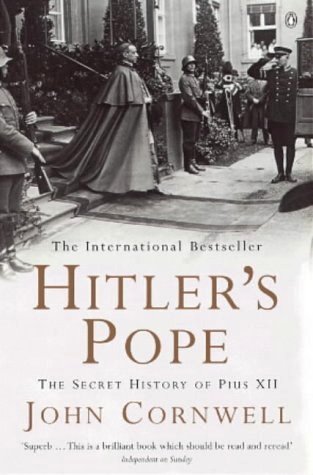 Framing Pius as arguably the most dangerous churchman in modern history, Cornwell charged that the Pontiff not only failed to speak up for the Jews; he was in fact responsible for Hitler’s rise to power and for the entire Holocaust. Cornwell also claimed that Pius XII “had a personal antipathy toward the Jews” and states he, Cromwell, had drawn “on research from secret Vatican and Jesuit archives made available only to the author,” a claim the Vatican strongly denied and a claim which Rychlak, in his book Hitler, The War and The Pope has also refuted. And, just in case Cornwell’s reader missed the point, the book’s dust jacket boasts a fraudulent photograph of Pius as nuncio in 1927 flanked by Nazi guards circa 1939 photo-shopped alongside the then-Nuncio’s image.
Framing Pius as arguably the most dangerous churchman in modern history, Cornwell charged that the Pontiff not only failed to speak up for the Jews; he was in fact responsible for Hitler’s rise to power and for the entire Holocaust. Cornwell also claimed that Pius XII “had a personal antipathy toward the Jews” and states he, Cromwell, had drawn “on research from secret Vatican and Jesuit archives made available only to the author,” a claim the Vatican strongly denied and a claim which Rychlak, in his book Hitler, The War and The Pope has also refuted. And, just in case Cornwell’s reader missed the point, the book’s dust jacket boasts a fraudulent photograph of Pius as nuncio in 1927 flanked by Nazi guards circa 1939 photo-shopped alongside the then-Nuncio’s image.
The result of all this?
This artfully engineered smear began to stick. The lie became credible and then gospel. Nor were many interested in Rychlak’s probing question: “By what dialectic, or through what human fickleness, has a great benefactor of humanity, and of the Jews particularly now become a criminal? Pope Pius XII’s reputation flipped so fully and so fast without any new evidence being uncovered – indeed solely on the basis of activity or inactivity that had been fully known for almost two decades. This was not an organic result of serious scholarship. Something else was at play.”
Which indeed it was. All of which Pacepa and Rychlak have confirmed in Disinformation: That the KGB sponsored The Deputy to discredit Pius XII and through him the Catholic Church. And that an on-going Soviet and later Russian campaign of disinformation, disseminated through a dizzying number of agents and agencies, has been targeting both Catholicism and Judaism for constant defamation and denigration. And that, while Cornwell may not have any connection to the Russian disinformation machine and its devices, his methods were eerily similar: “If you really want to slander someone, just pretend you were completely impartial, even sympathetic, when you started your investigation into his character, and then proclaim your deep regret over being forced to admit his faults. Or vice versa,” Pacepa writes. Cornwell did this, and promoters and supporters of The Deputy did exactly the same. “That does not necessarily mean Cornwell was an agent of the Kremlin, but it does mean that in addition to using their moniker for Pius XII, he employed the same methods they did.”
Fatima’s warnings resonate
Impossible, you’re thinking? Diabolical, to be sure, but also completely credible as is Pacepa’s documentation. The above also confirms Our Lady of Fatima’s warnings about Russia in ways impossible to duplicate elsewhere. Since 1917, the hammer and sickle has indeed blighted everything it has touched. It has engineered unprecedented mass murder and, through the use of fear, deceit, violence and a complex network of subversive tactics, it has also infused into the world a moral idiocy to disable all opposition to its demonic power.
Which brings us back to Pius XII who, as did John Paul II after him, faced communism’s horrors and deceits head on and whose “heroic virtues” were promulgated by Benedict XVI in 2009, as one of the greatest popes in Church history. So how is it that he is not even beatified yet?
Well, given the careful and painstaking campaign of disinformation engineered against him, this can’t be accidental. And given that the Church had always been opposed to communism, precisely for its ruthless atheism, its assault on the life, rights and dignity of the human person and its unprecedented oppression of religion, could it be that the much vaunted ‘death of communism’ remains the greatest hoax of the modern era? And that communism’s relentless crusade for world domination is still underway?
How else to explain the fact that a series of recent polls indicate that more than half of millennials believe communism was never a problem and still isn’t? That western politics are leaning heavily towards socialism? Towards secularism? Towards infanticide? Towards renewed anti-Semitism? Towards paganistic environmentalism? And towards moral idiocy in general?
Today’s Russia
Perhaps it’s time to look to Russia itself for answers. And to revisit her errors, to which Our Lady of Fatima referred. Have the prayers, rosaries and leadership of the popes, especially Pius XII and St. John Paul II, been enough to convert Russia and stop the spread of her errors throughout the world – the dissolution of the Soviet Union in 1991 notwithstanding?
Periodically, I hear claims that under Vladimir Putin de-Stalinization has taken place in Russia. And I also hear that Russia is becoming Christian, particularly since the opening of the Soviet archives in the mid-1990s revealed the extent of evil unleashed by Stalin.
Is this true? If so, what is one to make of reports like this one from Foreign Policy magazine? “Over the last few years, President Vladimir Putin has presided over the rehabilitation of one of the 20th century’s greatest monsters. Be-deviled by the country’s economic decay and fearful of dissent, he has turned to the ghost of Stalin to rally the Russian people and to prepare them for the sacrifices that lie ahead.”
Keeping in mind that this revival of Stalin’s memory is happening simultaneously with the rise of socialism and anti-Semitism again throughout the world, should this not concern all who worship God and prize freedom?
Such menacing revivals also suggest that, if correct, Russia remains as spiritually benighted as in 1917, and that the rumours of Russia’s Christian renaissance under Putin are just that – rumours, further suggesting that the disinformation machine is still churning.

